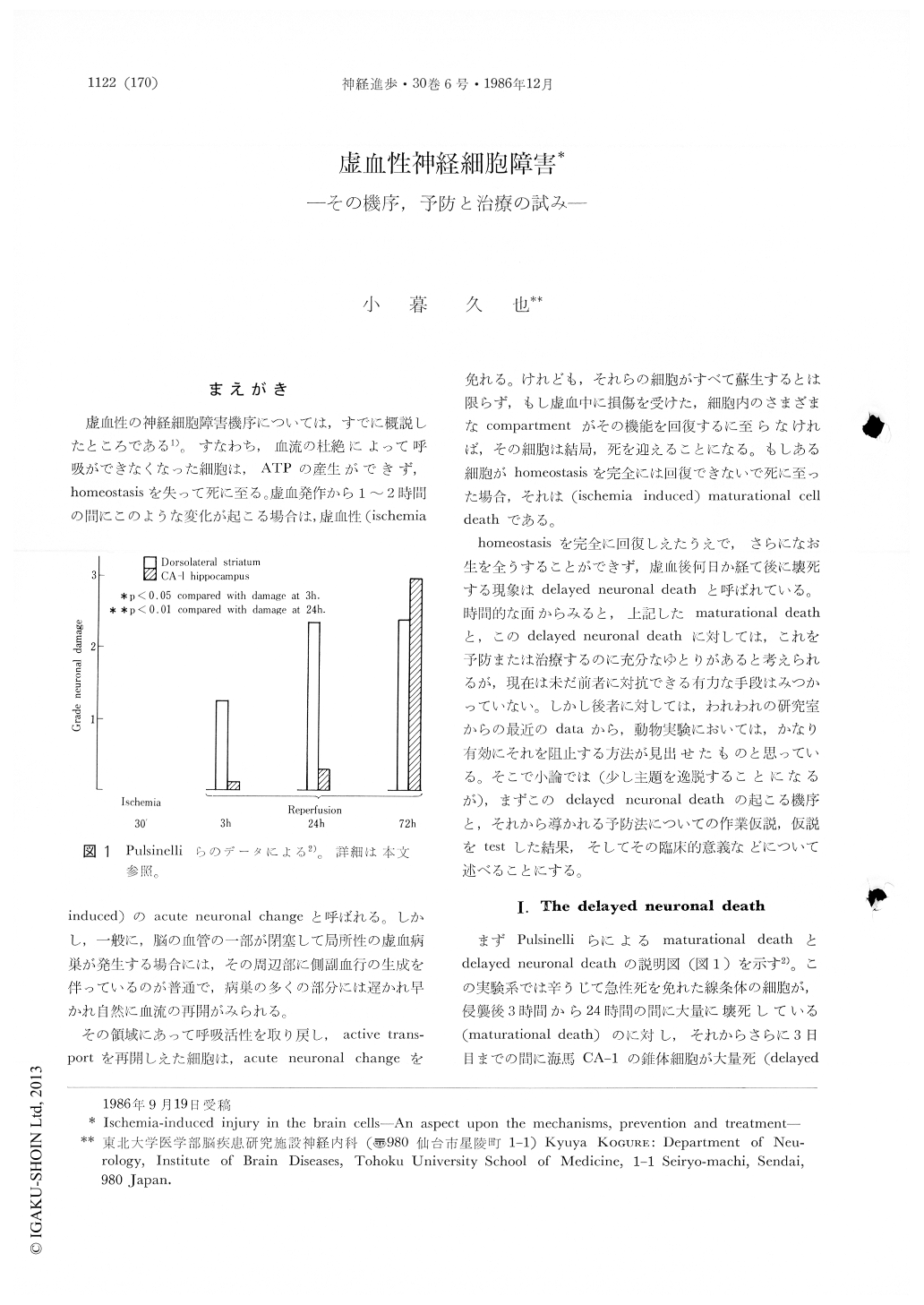Japanese
English
- 有料閲覧
- Abstract 文献概要
- 1ページ目 Look Inside
まえがき
虚血性の神経細胞障害機序については,すでに概説したところである1)。すなわち,血流の杜絶によって呼吸ができなくなった細胞は,ATPの産生ができず,homeostasisを失って死に至る。虚血発作から1〜2時間の間にこのような変化が起こる場合は,虚血性(ischemiainduced)のacute neuronal changeと呼ばれる。しかし,一般に,脳の血管の一部が閉塞して局所性の虚血病巣が発生する場合には,その周辺部に側副血行の生成を伴っているのが普通で,病巣の多くの部分には遅かれ早かれ自然に血流の再開がみられる。
その領域にあって呼吸活性を取り戻し,active transportを再開しえた細胞は,acute neuronal changeを免れる。けれども,それらの細胞がすべて蘇生するとは限らず,もし虚血中に損傷を受けた,細胞内のさまざまなcompartmentがその機能を回復するに至らなければ,その細胞は結局,死を迎えることになる。もしある細胞がhomeostasisを完全には回復できないで死に至った場合,それは(ischemia induced)maturational celldeathである。
Our working hypothesis about mechanisms underlying the delayed neuronal death is as follows;Glutamate released to synaptic clefts in normal neurotransmission opens receptor operated ion channel to the post-synaptic membrane. In case of ischemia, a large amount of glutamate is released and perturbs the ion channel, and the channel allows an excess amount of ions to move across the fenestrated membrane. If the ion pumps can counteract to this ionic deluge, the affected neurons can maintain the homeostasis. However, because the mitochondria can not increase the rat of ATP production above normal, the maintenance of homeostasis may occur compromising with the biosynthetic activities.

Copyright © 1986, Igaku-Shoin Ltd. All rights reserved.


